Frodsham
OS Grid ref:- SJ5177
The twentieth century seems like an intruder into Frodsham's wide tree lined main street, the ancient settlement is of Saxon origin and was recorded in the Domesday Book of 1086. The origin of the town's name is not entirely clear, it possibly derived from the Ham (a small village) of Frod. An alternative source of origin is the Ham on the Ford (i.e. over the River Weaver). An alternative, more obscure explaination exists which suggests the name means "promontory into marsh", which would make sense considering that Frodsham had a promontory castle very close to marshland.
Frodsham was granted a charter by Ranulph de Blunville, Earl of Chester, in the thirteenth century. The town is regarded as the best example of a planned medieval town in Cheshire with burgage plots lining the north side of Main Street and on Church Street
The seventeenth century Bears Paw Inn
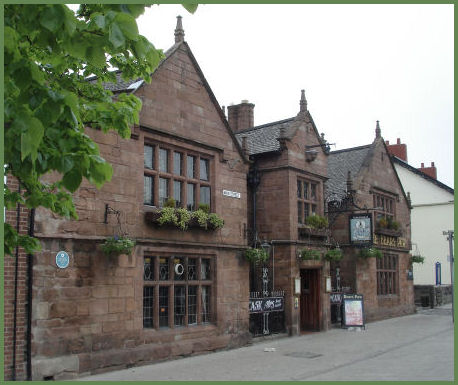
The Bears Paw Inn, which dates from 1632 and was originally referred to as 'the Lions Paw', is a fine picturesque old coaching inn with mullioned and transomed windows, which contains many period features including the rermnants of wattle and daub plasterwork and serves excellent meals. The inn was built on land owned by the Savage family of nearby Rocksavage. It was originally known as the 'Lyon's Paw', this being based on an animal's paw on the arms of the Savage family. In 1697 Earl Rivers of the Savage family converted to Roman Catholicism and, following the outcry resulting from this action, the name was changed to the 'Bear's Paw'. The lintel over the front door bears the date of the inn's construction '1632', along with the initials "WL" and "ML", which are those of William and Margaret Littlemore, the original owners.
The town's main street also contains some characterful black and white half timbered cottages, which are ecclectically joined with spacious Georgian and Victorian town houses and more modern buildings. The trees that line the main street were planted to commemorate Queen Victoria's Diamond Jubilee of 1897.
Thatched cottages on Frodsham's main street
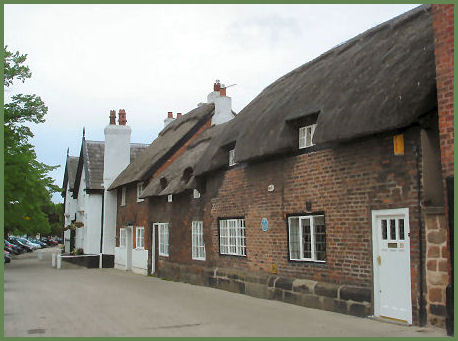
The Grade II listed oak framed thatched cottages on Frodsham's main street date from the seventeenth century. The oldest of them dates to the mid seventeenth century.
St. Laurence's Church
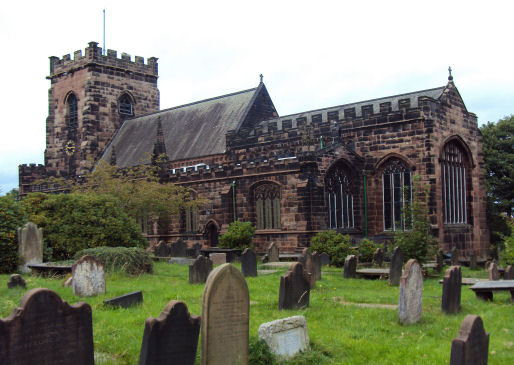
A church has stood on the site of the parish church of St. Lawrence since Saxon times, of which the Domesday Book of 1086 records. The present building dates from around 1180 and is built from local red sandstone. Parts of the twelfth century church remain in the nave. The chancel was lengthened in the fourteenth century, the tower also dates from this time. In the sixteenth century the north chapel (the Helsby Chapel), and probably the south chapel (Lady Chapel), were added. Considerable rebuilding of the church was carried out in late Victorian times. The north porch dates to 1715 and the south porch 1724.
The Nave
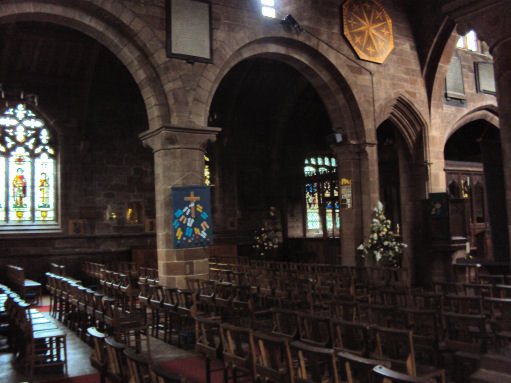
The interior of the nave is considered to be one of the finest examples of Norman architecture in the county of Cheshire. Although the arcades have been much restored, they still contain some Norman material.
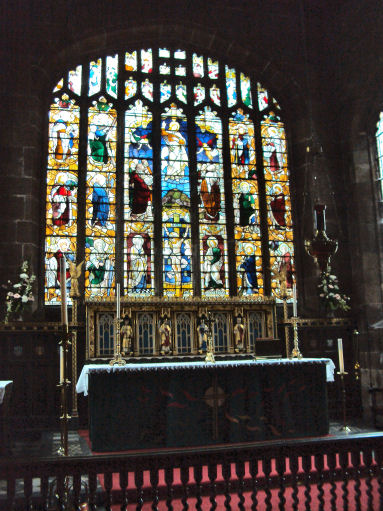
In the sanctuary is a piscina adapted from a fourteenth century corbel and a sedilia. The altar rails with twisted balusters date from the seventeenth century. The pulpit is Victorian and replaces an earlier three-decker pulpit. A fragment of Saxon carving can be seen in the interior of the south wall of the tower. The reredos in the north chapel dates from around 1700. An altar table dated 1678 and the parish chest of 1679 are both the work of Robert Harper.
Castle Park, a few minutes walk from the centre of Frodsham has an extensive range of trees and plants. The park occupies the site of the Norman castle, which from the fourteenth century acted as the gaol. The castle burnt down in 1654 and was replaced by the present building, Park House. As well as the gardens, Castle Park has a large children's play area with everything from climbing frames to swings and slides and tennis and bowling facilities. The Castle Park Arts Centre hosts regular exhibitions.
Castle Park
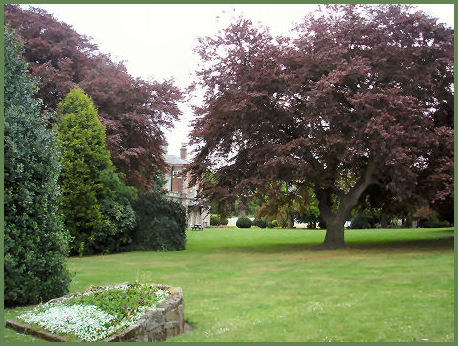
Frodsham Hill, a steep sandstone escarpment which looms above the town is surmounted by the war memorial and offers excellent views of the River Mersey from its summit. Much of the hill is owned by the Woodland Trust. The hill is the location of an Iron Age promontory fort, the outline of which can still be seen.
A walk to the Frodsham Hill Monument
Distance- 3 miles
Duration: around 1.30 hours
*Commencing at the Beacon Hill car park, exit the car park and turn right on the road, you will shortly see a signpost directing you left along the Sandstone Trail. Follow the path downhill and cross Frodsham golf course.
*Find the signpost at the far side of the golf course and follow it along to a cliifftop viewpoint. TAKE CARE AT THE EDGE. Follow the wooden steps descending the hill and follow the path around to the right. On reaching the fork in the path take the right fork which skirts the base of the cliff.
*On reaching a fence at the exit of the forest, bear right along the track which becomes a bridleway. On arrival the Frodsham Hill Wood signpost, take the right path, and then follow the footpath sign, again pointing right and leading uphill.
*At the summit of the hill, follow the track marked by Sandstone Trail "S" to arrive at the monument at the top of Frodsham Hill.
*To return to the car park, take the footpath at the rear of the monument towards the large hotel building which leads to a parking area on the road. Follow the road up the hill and round to the left, passing a signpost which leads to the golf course and car park.
Nearby places of interest
Norton Priory, a Grade I listed building, situated near Runcorn, was a priory and later an abbey, established as an Augustinian foundation by William Fitz Nigel, 2nd Baron of Halton.
Halton Castle founded as a motte and bailey castle in about 1071, by Nigel, Baron of Halton. The barony of Halton was established after the Norman conquest by Hugh Lupus, Earl of Chester. The castle was extended by successive owners over the following three centuries. During this period the castle served as an administrative centre, functioning as court, prison and depository for court records.
Ince Manor a former monastic grange, is one of only two surviving monastic manorial buildings in Cheshire.
The Catalyst Museum at Widnes is the only science centre and museum devoted to chemistry and how the products of chemistry are used in every day life. Its key aim is to make science exciting and accessible to people of all ages and to inform them about science based industries and their role in our lives, past present and future.
Woodhouses Iron Age hill fort lies to the East of Helsby, and at the northern end of the Mid Cheshire Ridge.
Pex Hill Local Nature Reserve at Cronton, woodland surrounded by heathland, with excellent views of the Mersey Estuary, Widnes-Runcorn bridge, Liverpool and the mountains of North Wales.
